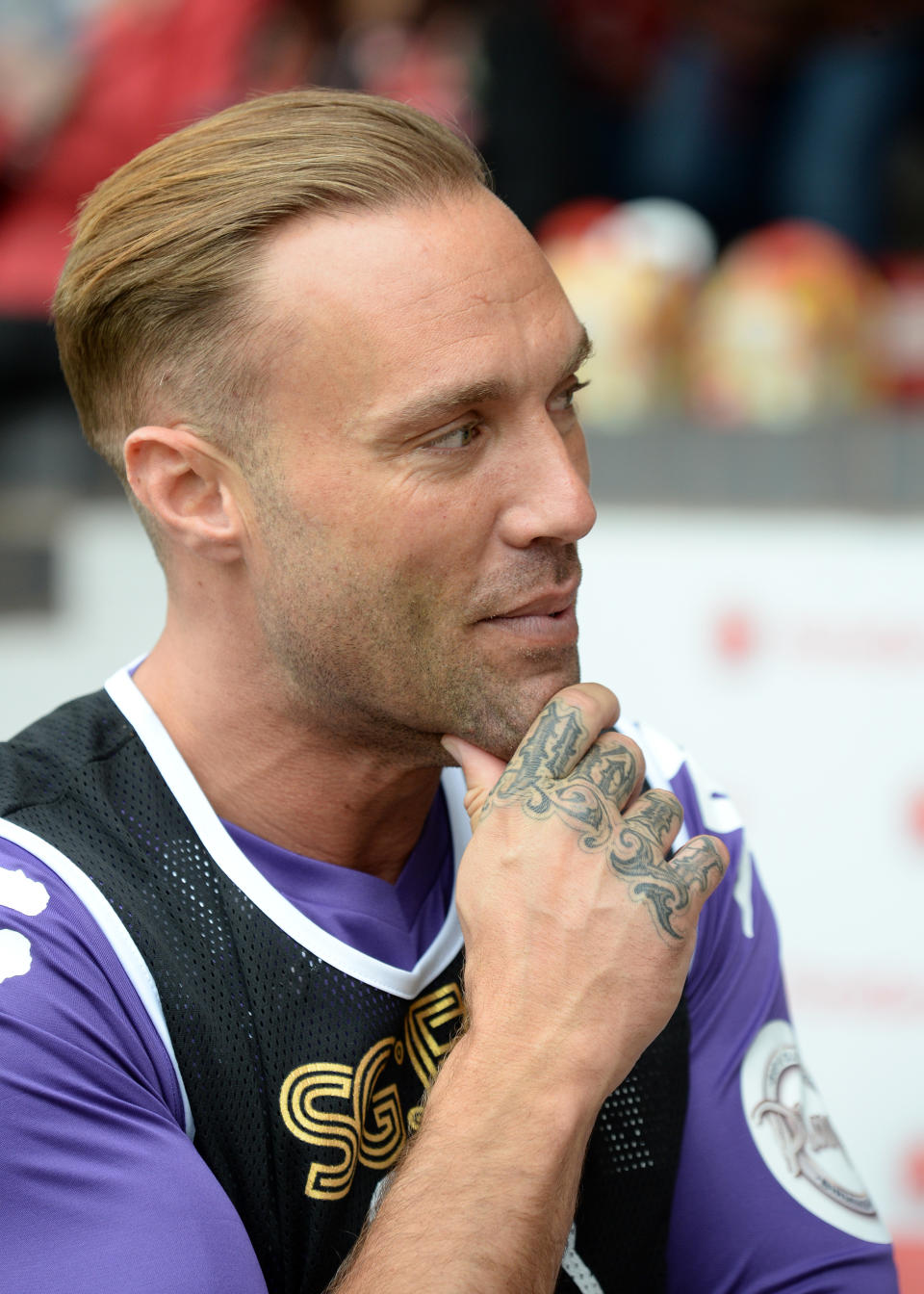Hollyoaks actress has hair transplant for receding hairline: How the procedure works
![Stephanie Davis underwent a hair transplant. [Photo: British Hair Clinic]](https://s.yimg.com/ny/api/res/1.2/OyULWXilXEAxb8ztC8pUUg--/YXBwaWQ9aGlnaGxhbmRlcjt3PTEyNDI7aD05MzE-/https://media-mbst-pub-ue1.s3.amazonaws.com/creatr-uploaded-images/2019-11/ee1b3cd0-1308-11ea-b7df-9431dfd3090f)
Stephanie Davis has revealed she had a hair transplant to counteract a receding hairline.
The Hollyoaks star, 26, shared in an Instagram video how the procedure, which she underwent at the British Hair Clinic, was “something that I’ve wanted for many years”.
"I was bullied and called horrible names in school because of my high hairline,” she added in a further statement, discussing her motivation behind undergoing the procedure.
While the procedure is often considered a painful one, Davies claimed she “didn’t feel a thing” aside from “the injections at the beginning”.
![Stephanie Davis underwent a hair transplant. [Photo: British Hair Clinic]](https://s.yimg.com/ny/api/res/1.2/qYyqa4eWTkwp23bzQCbwfQ--/YXBwaWQ9aGlnaGxhbmRlcjt3PTk2MDtoPTEyODA-/https://media-mbst-pub-ue1.s3.amazonaws.com/creatr-uploaded-images/2019-11/ee33f4f0-1308-11ea-97f5-9643b7b0a802)
Davis has previously spoken about experiencing hair loss in 2016, which she attributed to stress.
READ MORE: How to slow hair loss
“My hair snapped a lot and it also started to fall out with all the stress I was under. I also came up in blotches on my skin, she wrote in a blog post for OK! magazine. “If I touched it, it would just come out in my hands and I was told it was all the pressure I was under.”
Hair transplant surgery
In recent years, hair transplant procedures have had a surge in popularity – with the number of procedures performed in Europe increasing 168% in 2016 compared to the previous decade, according to data published by the International Society of Hair Restoration Surgery (ISHRS).
We asked Dr Asim Shahmalak, a world-leading hair transplant surgeon who runs the Crown Clinic in Manchester, about the procedure.
Who gets it done?
“Hair transplantation is the only permanent long-term solution for baldness,” he told Yahoo UK. “People seek transplants for a number of reasons but the most popular is to restore or change the shape of their hairline. People with areas of scarring from injuries such as burns from an accident may also be suitable for a transplant.”
How is a hair transplant performed?
There are two types of hair transplantation.
The first, and more popular, is FUE (follicular unit extraction), where donor hairs are removed individually from the back and sides of the scalp before being replanted in the balding areas. Famous FUE patients include Shahmalak’s clients, model Calum Best and the Coronation Street actor Jack P Shepherd, as well as the footballer Wayne Rooney and the singer Robbie Williams.
READ MORE: Rob Lowe defends Prince William bald comments

The second is FUT (follicular unit transplantation), where the donor hair is removed all in one go by surgically cutting a strip of skin from the scalp. The donor grafts are then extracted from this strip by technicians under a microscope and then replanted in the balding areas in the same way as FUE. Shahmalak has previously treated TV doctor Christian Jessen for two separate FUT procedures.
FUT treatments tend to be cheaper, but leave a linear scar where the strip is removed – so patients tend to wear their hair long to cover this scar. FUE is often favoured because it leaves less scarring, and this also allows men to sport a popular “short back and sides” style.
How much does it cost?
Whichever type of hair transplant you opt for, it comes at a hefty cost.
Shahmalak said: "Hair transplants procedures between £6,000-£15,000 depending on the procedure used and the number of grafts. FUE is more expensive than FUT because it is more labour intensive and take longer to perform because the donor hair is removed individually."
Who’s getting it done?
“Anyone who has experienced permanent hair loss may be a candidate for hair restoration surgery including men and women with pattern baldness,” said Shahmalak.

“People seek transplants for a number of reasons but the most popular is to restore or change the shape of their hairline. People with areas of scarring from injuries such as burns from an accident may also be suitable for a transplant.
“The procedure is particularly popular among those “in the public eye” because of the pressure to look good,” he adds.
“In terms of occupations, I treat a proportionately high number of people who work in the public eye. These could be actors, TV presenters and particularly leading sportsmen, notably footballers, whose image rights are worth millions and earn a significant proportion of their income from commercial endorsements.”
Who is and isn’t a candidate?
First of all, age is an important factor. Individuals under 25 generally aren’t eligible for a hair transplant – “largely because it is difficult to establish how a patient's baldness will progress before that age,” explains Shahmalak.
READ MORE: Has a 'cure' for baldness been discovered?
He adds: “Hair transplants are most effective on people in the relatively early stages of hair loss where the balding area is not excessive and there is plenty of donor to draw on.
“Prince Harry, for instance, who has spoken recently about his male pattern baldness, would be an excellent candidate for a procedure.
“His brother, Prince William, on the other hand, is probably too far gone to benefit from a procedure. His male pattern baldness is too advanced and there is too big an area for a hair transplant surgeon to be able to provide adequate cover. There would be insufficient donor hair with Prince William."


